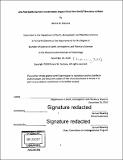| dc.contributor.advisor | Samuel Bowring and Asish Basu. | en_US |
| dc.contributor.author | Fantone, Dennis W | en_US |
| dc.contributor.other | Massachusetts Institute of Technology. Department of Earth, Atmospheric, and Planetary Sciences. | en_US |
| dc.coverage.spatial | nwht--- | en_US |
| dc.date.accessioned | 2018-08-22T14:28:13Z | |
| dc.date.available | 2018-08-22T14:28:13Z | |
| dc.date.copyright | 2010 | en_US |
| dc.date.issued | 2011 | en_US |
| dc.identifier.uri | http://hdl.handle.net/1721.1/117445 | |
| dc.description | Thesis: S.B., Massachusetts Institute of Technology, Department of Earth, Atmospheric, and Planetary Sciences, February 2011. | en_US |
| dc.description | Cataloged from PDF version of thesis. "December 20, 2010." "This thesis was submitted to the Institute Archives without all the required signatures"--Disclaimer Notice page. | en_US |
| dc.description | Includes bibliographical references (pages 33-34). | en_US |
| dc.description.abstract | This paper seeks to describe an impact glass from the K/T boundary layer at Beloc that is depleted in rare earth elements (REE) relative to continental crust. It is widely agreed that a large bolide struck the Yucatan Peninsula roughly 65 Ma spreading a worldwide iridium anomaly. However, there is only one case of a piece of the impactor being found (Kyte et al., 1995). Impact glass from the K/T boundary at Beloc, Haiti has been widely researched with several types of glass documented. So far, all of the documented glass exhibits a crustal REE compositional pattern. In this study, REE composition from two glass types from the same K/T boundary layer sample are examined using a laser ablation inductively coupled plasma mass spectrometer (LA-ICP-MS). One glass type exhibits crustal REE composition which is enriched normalized to chondrite. The other glass type, however, displays a meteoritic REE composition signature. REE patterns for this glass are nearly flat when plotted normalized to chondrite with an average La/Sm ratio of 1.51 compared to 2.69 for crustal glass. Major element data were obtained through electron microprobe analysis and displays a composition that differs from one glass type to the other. Results suggest chondritic parent material from the Chicxulub impactor. | en_US |
| dc.description.statementofresponsibility | by Dennis W. Fantone. | en_US |
| dc.format.extent | 34 pages | en_US |
| dc.language.iso | eng | en_US |
| dc.publisher | Massachusetts Institute of Technology | en_US |
| dc.rights | MIT theses are protected by copyright. They may be viewed, downloaded, or printed from this source but further reproduction or distribution in any format is prohibited without written permission. | en_US |
| dc.rights.uri | http://dspace.mit.edu/handle/1721.1/7582 | en_US |
| dc.subject | Earth, Atmospheric, and Planetary Sciences. | en_US |
| dc.title | Low rare earth element concentration impact glass from the K/T Boundary at Beloc | en_US |
| dc.type | Thesis | en_US |
| dc.description.degree | S.B. | en_US |
| dc.contributor.department | Massachusetts Institute of Technology. Department of Earth, Atmospheric, and Planetary Sciences | |
| dc.identifier.oclc | 1048400859 | en_US |
